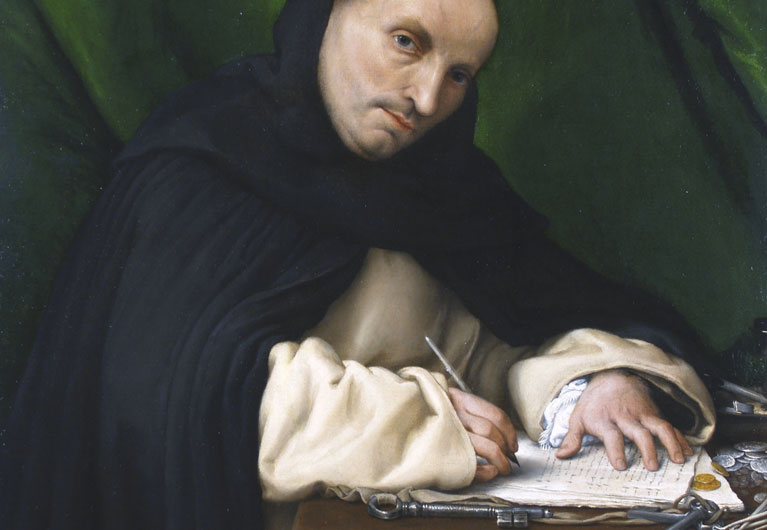The fresco cycle depicting the Stories of Saint Ursula (Storie di Sant'Orsola) reinterpret an ancient legend in an extraordinarily realistic and dynamic fashion. Painted between 1355 and 1558 circa, by Tomaso da Modena (also spelled Tommaso) these frescoes are among the major masterworks of Italian painting of the Trecento, while being the most important by this particular artist, and are surely the finest of the very many art treasures that Treviso possesses.
Long plastered over, the fresco cycle, located in one of the chapels of the deconsecrated church of Santa Margherita degli Eremitani in Treviso, was rediscovered in 1882, by the abbot Luigi Bailo while the building, which had been relegated to being a stables for the military, was in the throes of being demolished.
Amidst general indifference, while being hurried along by the demolition workers who also got in his way as he worked, and with only two young men, Antonio Carlini, a sculptor and Girolamo Botter, a painter, to help him, and with a lack of funds forcing him to resort to the detachment process (tecnica dello stacco) of removal of the frescoes, Bailo was – against all odds – able to preserve Tomaso’s masterpiece almost in its entirety, securing the rescued works onto flexible wooden frames for transport to their next destination.
Thus was he able to bring the entire cycle of the Stories of Saint Ursula -- an astounding 120 square metres – to the Museum, an enterprise that remains one of the largest such operations ever executed anywhere.
The scenes depicted are taken from the thirteenth-century collection of the lives of the saints known as The Golden Legend (Latin: Legenda aurea or Legenda sanctorum), compiled by Jacopo da Varazze (Jacopo De Fazio, aka the blessed Jacobus de Varagine, in Latin Voragine and in Italian, Giacomo da Varazze, or Jacopo da Varazze; c. 1230–1298).
Ursula, the Christian daughter of the King of Brittany, agreed to marry the (pagan) son of the King of England on condition that he converted and that she might, before her wedding, take a pilgrimage to Rome, accompanied by 11,000 other virgins. Having reached Cologne, the party, accompanied by the Pope, who had been inspired to join them as a result of a dream, were to stop in Cologne to convert the Huns, who were currently occupying the city. Ursula, having caught the eye of the Hun prince, made it plain that she was not interested in him. The outcome was that she, the Pope, and the other 11,000 virgins were promptly martyred.
Framed by the Annunciation scene in the lunette and Saint Ursula enthroned, between the Virgin Mary and the Crucifixion, on the end wall, this dramatic story is masterfully set down by the painter. He depicts the female figures in minute detail, in their stance, in the details of their clothing, as well as the background. Tomaso’s exquisitely refined and elegant style extends to portraying the women’s mood, their facial features and hand gestures, backed by a strong narrative with touches of humour that were quite unknown at the time.
One example is the scene where we see Ursula with her mother: for the first time in the recorded history of art, Ursula’s words are seen coming out of her mouth in the form of a word bubble, comic-book style -- some 9,000 years avant la lettre.
Each scene leads into the next in a finely paced narrative and expressive flow that draws the spectator along right to the very last, and which consists of an epilogue that Tomaso renders with his signature intensity and consummate sense of drama





